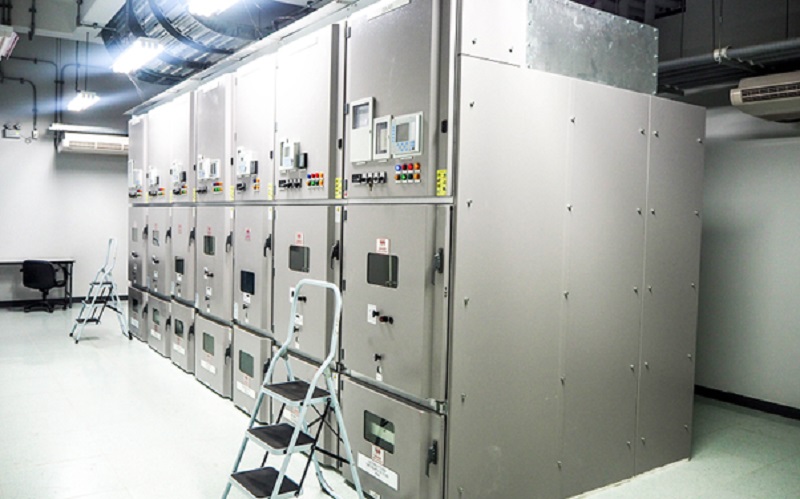In Singapore, the type of power supply you choose matters more than most people realise. It’s about avoiding the annoyance of a blackout, protecting equipment, preventing data loss, and ensuring safety. That’s where the debate between single-phase UPS in Singapore and three-phase UPS systems comes in. While the terms might sound technical, the reality is that these systems touch everything from your home Wi-Fi router to your company’s data centre. The question is, how do you separate myth from fact, must-haves from gimmicks, and first impressions from long-term performance?
Busting Power Supply Misconceptions
One of the biggest myths is that single-phase UPS systems are outdated. In fact, single-phase UPS in Singapore remain ideal for smaller loads such as offices, retail shops, and residential setups. They deliver reliable protection for computers, routers, and light equipment, proving that “smaller” doesn’t mean less capable.
Another common misconception is that three-phase UPS systems are only for massive industrial plants. While it’s true they’re more common in large-scale facilities, they’re increasingly used in medium-sized businesses where equipment like servers, medical devices, or high-end manufacturing machinery requires stable, high-capacity power.
A third myth is that single-phase and three-phase power are interchangeable. They are not. Single-phase is more efficient for lower loads, while three-phase power offers smoother delivery for heavy equipment and larger infrastructures. Understanding this distinction can prevent costly overinvestment, or worse, equipment failure.
Features That Keep You Powered Up
When deciding between UPS options, features matter as much as the system itself. Voltage regulation is a must-have tool, ensuring sensitive devices receive stable power even when the external supply fluctuates. Without it, even small surges or drops can damage electronics over time.
Monitoring capabilities are another vital tool. Modern UPS systems come with real-time tracking and alarms, allowing businesses to act quickly when issues arise. For single-phase UPS in Singapore, this often means peace of mind for home offices or smaller setups. For larger three-phase UPS systems, these monitoring tools can be the difference between seamless operation and costly downtime.
Battery management is equally essential. Advanced UPS models offer smart charging and efficient battery usage, prolonging lifespan and reducing replacement costs. Whether you’re running a corner café with a single-phase system or overseeing a warehouse with three-phase UPS systems, having these tools ensures resilience against unexpected outages.
What Power Systems Say About You
Believe it or not, the UPS system you choose makes an impression on clients, employees, and even regulators. Walking into a modern office equipped with a reliable single-phase UPS in Singapore signals preparedness and professionalism. It shows attention to the details that keep operations flowing, even during sudden disruptions.
Meanwhile, entering a facility backed by robust three-phase UPS systems creates a different impression of scale, authority, and commitment to safeguarding critical operations. For industries like healthcare, logistics, or finance, this kind of reliability reassures stakeholders that downtime won’t jeopardise trust or safety.
Even in homes, the impression matters. A UPS system for personal use might seem excessive at first glance. But when visitors see uninterrupted connectivity during a neighbourhood power blip, it demonstrates foresight and practical investment. First impressions are about the confidence your infrastructure inspires.
Matching Power to Purpose
Consider a small design studio. With ten computers and a server for storing projects, the team relies on a single-phase UPS in Singapore to keep productivity steady. Every time a thunderstorm rattles the power grid, their work continues uninterrupted.
Contrast this with a logistics hub handling thousands of deliveries daily. Here, three-phase UPS systems protect conveyor belts, scanning machines, and backend servers. Without them, even a few minutes of downtime could translate to delays, revenue loss, and reputational damage.
The lesson? Single-phase and three-phase power serve different worlds, and choosing the right one means aligning your energy backbone with your goals.
Energy and Responsibility
Beyond the technicalities, UPS systems also connect to broader responsibilities. Energy efficiency has become non-negotiable in Singapore, where sustainability targets shape both corporate policies and consumer choices. Single-phase UPS units, when used for appropriate loads, prevent waste by matching supply with demand. Three-phase UPS systems, on the other hand, reduce transmission losses in larger infrastructures. In both cases, the right system lowers costs while contributing to greener operations. It’s a reminder that power decisions are about performance and responsibility to the environment and future. Whether you’re running a household or managing an enterprise, the choice between single-phase UPS in Singapore and three-phase UPS systems shapes efficiency, safety, and reputation. In the end, it’s about matching power solutions to your real needs. Get it right, and you won’t just survive a blackout.
Curious about your power setup? Explore whether single-phase or three-phase UPS systems at Vallous International, and take the first step towards uninterrupted confidence today.

